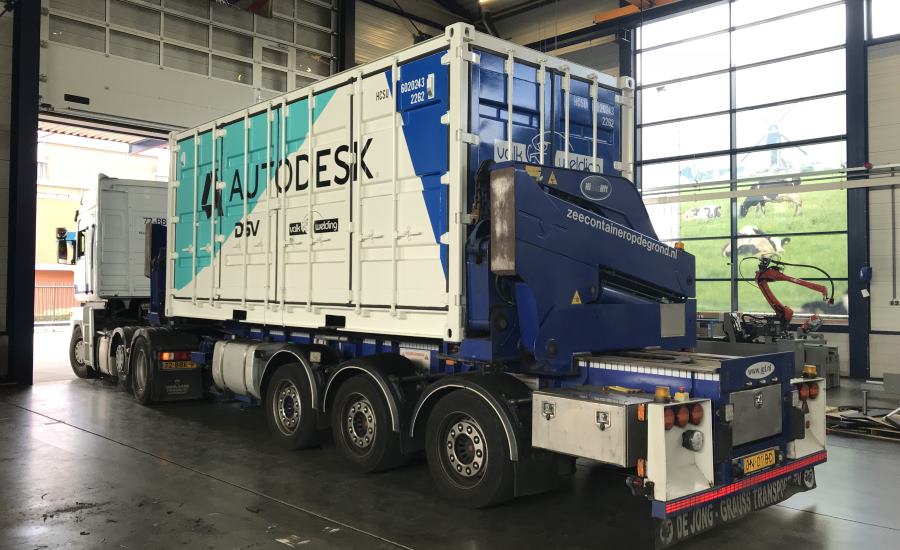Described as a large-scale additive manufacturing “toolbox” for the construction industry, Autodesk's recently unveiled robot-filled shipping container mobilizes the power of two Panasonic TS-950 robots that be deployed to various job sites. The robots, supplied by Valk Welding, can be utilized for directed energy deposition (DED), a form of additive manufacturing to produce large, strong and usable metal components.
Here, Kimberley Losey, product marketing manager at Autodesk, explains how the mobilized technology could transform the future of the construction industry.
What would you say is the main need this shipping container satisfies? Is there any information about how much money this technology is projected to help companies save?
This project is really about the technology inside the container and the ability to use additive manufacturing to produce large-scale parts in materials like steel that would be applicable to the architecture, engineering and construction (AEC) industry. The container provides easy transportation.
This technology opens up new possibilities for design with unprecedented freedom of form, the potential to produce parts that could have higher performance characteristics or be made with fewer components which would simply supply chains and of course the ability to fairly easy re-produce bespoke heritage components. We brought his robot-filled container to Autodesk University to ask our customers what they would do with it and it seems to have started some interesting conversations in new directions as well.

As you know, it is our vision to help our customers do more, do it better and with less negative impact on the world. We do believe the ability produce large metal parts on demand will have a positive impact for the right applications but we still have some work to do to quantify it- stay tuned!
Would this potentially eliminate the need and wait time for ordering a part at a construction site?
Yes, it’s possible that this technology could eliminate the need and wait time for ordering parts at a construction site. This will depend on the part and the application but, for difficult to reach locations, or specialty components, it could become a reliable solution. We have seen it in the shipping industry, for example that ships could wait for months for a part to arrive but this directed energy deposition printing process can produce a class-certified propeller in a couple of weeks.
How long are production times?
Production time really depends on the part and the application, but I can tell you everyone in the world involved with additive manufacturing, or 3D printing, wishes it were faster. This particular solution has two robots working together to produce a single part. That speeds the process up, but when we are talking architectural scale, we are still talking about hours or days depending on the size of the component.
Do you foresee a future where this technology can help free up shop space?
The project is very much exploratory right now, so it’s hard to say, but we’re excited to see where the industry takes the concept in the future.











